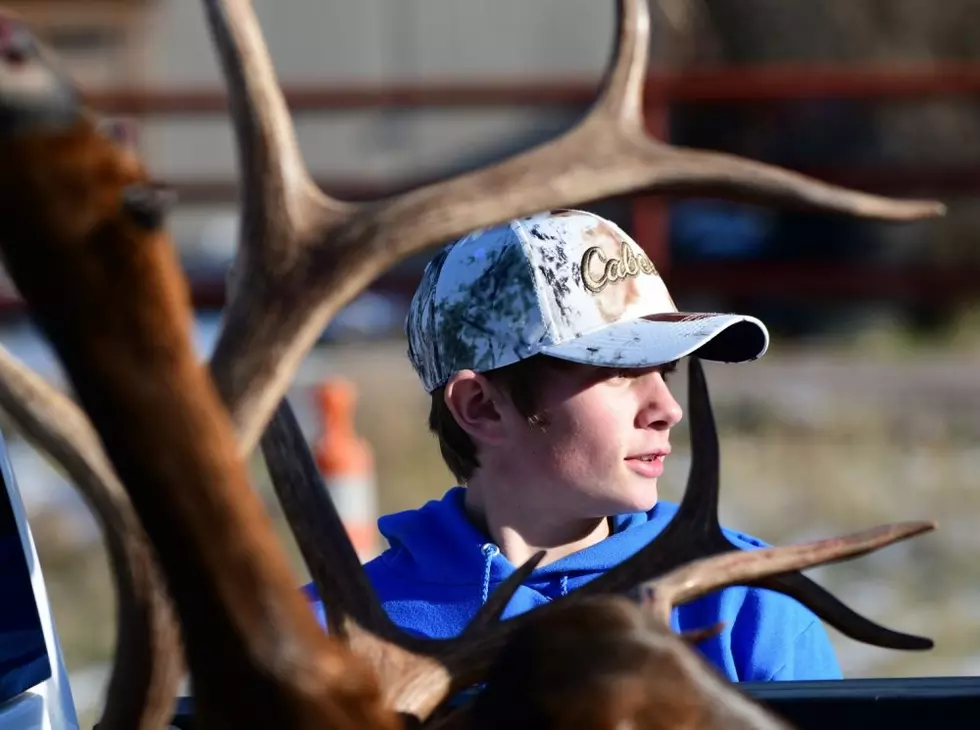
Weather bedevils western Montana hunters; 7 percent come home with game
After spending weeks hunting last year, Nicole Qualtieri almost felt guilty a week ago when she found a mule deer in her rifle sight after only three days out. But after observing him for a while and with daylight waning, she didn’t hesitate to take the shot when he turned broadside to her.
“I watched this year for a long time. He was really mellow and kind of easygoing. I just kind of fell in love with him. But he finally turned and gave me the perfect shot, and once I had it, I didn’t hesitate,” Qualtieri said. “Once I realized he was gone, it hit me like a brick truck and knocked the wind out of me. It felt like killing a friend in a way.”
After a few moments of introspection, Qualtieri spent the next few hours quartering the big buck to pack him back to her truck, one of the lucky few who will have meat in her freezer for much of the year.
Depending on the region, less than 10 percent of hunters come home with an animal in western Montana. This year, Montana Fish, Wildlife & Parks estimated about 7 percent of hunters were successful during the five-week general rifle season that ended Sunday. A warm autumn and a few tough winters may be the reason that hunters were only moderately successful.
For Region 2 of – which includes the area around Missoula, Hamilton, Seeley Lake, and points west of Deer Lodge and Anaconda – the check stations at Bonner and Darby recorded that hunters shot more than 450 white-tailed deer, 240 elk and almost 100 mule deer for the season.
The check stations run only on weekends so the numbers are used to gage the overall hunt. FWP also asks all hunters to stop at the stations, even if they weren’t successful, to give the agency a feel for trends in the number of hunters.
This year, hunters in Region 2 made fewer trips – 9,700 – during the six weekends in the season, compared to more than 11,000 last year.
Due to the warm October and early November – weekend high temperatures ranged from the 70’s to 50s – the number of hunters passing through the Bonner station was 300 down as of Nov. 4, compared to previous years. Those numbers improved a little during the last week of the season as snow and colder temperatures finally got elk moving and the deer rut kicked in. But hunters took fewer elk and mule deer through the Bonner station while white-tailed deer numbers remained about the same at about 390.
FWP Region 1 around Kalispell and Flathead Lake also reported slightly lower numbers for this year at its five check stations.
Fewer hunters ventured out or they made fewer trips, and they came back with fewer white-tails – 950 compared to 1,275 last year – and elk – 58 compared to 78 last year. However, hunters took twice as many mule deer compare to last year’s 51.
The 14,600 hunters who checked through Region 1 are the fewest in about a decade. By comparison, about 16,270 passed through last year.
It could be that fewer hunters bothered going out early in the season when warm temperatures had an effect on animal behavior. But it could also be due to fewer people are participating in the sport of hunting.
A U.S. Fish and Wildlife survey from March shows the number of hunters nationwide has dropped in the past 20 years to 11.5 million from 14 million. About 9 million of those are big-game hunters but a majority of hunters are baby boomers, many of who can’t hunt much anymore.
As far as the hunters’ success or lack thereof, Region 1 biologists credit several factors this season, including unseasonably warm weather and poor tracking conditions throughout the past month.
The rut played in Qualtieri’s favor, allowing her to track her buck without him noticing the few other deer she spooked. He was too busy pursuing one doe in particular to care about other distractions.
But Sunday’s season-ender came before the peak of the deer rut so other hunters couldn’t benefit from distracted bucks.
Finally, in western Montana, biologists also attribute back-to-back harsh winters that appeared to have had an impact on local herds in parts of the region. Harvest numbers this season are similar to the aftermath of the 1996-97 winter.
